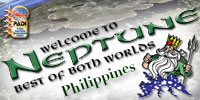Bryozoa - Moss animals
Bryozoa, also known as Polyzoa, Ectoprocta or commonly as moss animals, are a
phylum of aquatic invertebrate animals. Typically about 0.5 millimetres
long, they are filter feeders that sieve food particles out of the water using a
retractable lophophore, a "crown" of tentacles lined with cilia. Most marine species
live in tropical waters, but a few occur in oceanic trenches, and others are found
in polar waters. One class lives only in a variety of freshwater environments, and a
few members of a mostly marine class prefer brackish water. Over 4,000 living species
are known. One genus is solitary and the rest colonial.
The phylum was originally called "Polyzoa", but this term was superseded by "Bryozoa"
in 1831. Another group of animals discovered subsequently, whose filtering mechanism
looked similar, was also included in "Bryozoa" until 1869, when the two groups were
noted to be very different internally. The more recently discovered group were given
the name Entoprocta, while the original "Bryozoa" were called "Ectoprocta". However,
"Bryozoa" has remained the more widely used term for the latter group.
Individuals in bryozoan (ectoproct) colonies are called zooids, since they are not
fully independent animals. All colonies contain autozooids, which are responsible for
feeding and excretion. Colonies of some classes have various types of non-feeding
specialist zooids, some of which are hatcheries for fertilized eggs, and some classes
also have special zooids for defense of the colony. The class Cheilostomata have the
largest number of species, possibly because they have the widest range of specialist
zooids. A few species can creep very slowly by using spiny defensive zooids as legs.
Autozooids supply nutrients to non-feeding zooids by channels that vary between
classes. All zooids, including those of the solitary species, consist of a cystid
that provides the body wall and produces the exoskeleton and a polypide that contains
the internal organs and the lophophore or other specialist extensions. Zooids have no
special excretory organs, and the polypides of autozooids are scrapped when the
polypides become overloaded by waste products; usually the body wall then grows a
replacement polypide. In autozooids the gut is U-shaped, with the mouth inside the
"crown" of tentacles and the anus outside it. Colonies take a variety of forms,
including fans, bushes and sheets. The Cheilostomata produce mineralized exoskeletons
and form single-layered sheets that encrust over surfaces.
Zooids of all the freshwater species are simultaneous hermaphrodites. Although those
of many marine species function first as males and then as females, their colonies
always contain a combination of zooids that are in their male and female stages.
All species emit sperm into the water. Some also release ova into the water, while
others capture sperm via their tentacles to fertilize their ova internally. In some
species the larvae have large yolks, go to feed, and quickly settle on a surface.
Others produce larvae that have little yolk but swim and feed for a few days before
settling. After settling, all larvae undergo a radical metamorphosis that destroys
and rebuilds almost all the internal tissues.
Predators of marine bryozoans include nudibranchs (sea slugs), fish, sea urchins,
pycnogonids, crustaceans, mites and starfish. Bryozoans have
spread diseases to fish farms and fishermen.
Mineralized skeletons of bryozoans first appear in rocks from latest Cambrian period,
about 490 million years ago, making it the last major phylum to appear in the
fossil record. This has led researchers to suspect that bryozoans had arisen earlier
but were initially unmineralized, and may have differed significantly from fossilized
and modern forms. Early fossils are mainly of erect forms, but encrusting forms
gradually became dominant. It is uncertain whether the phylum is monophyletic.
Bryozoans' evolutionary relationships to other phyla are also unclear, partly because
scientists' view of the family tree of animals is mainly influenced by better-known
phyla. Both morphological and molecular phylogeny analyses disagree over bryozoans'
relationships with entoprocts, about whether bryozoans should be grouped with
brachiopods and phoronids in Lophophorata, and whether bryozoans should be considered
protostomes or deuterostomes.











